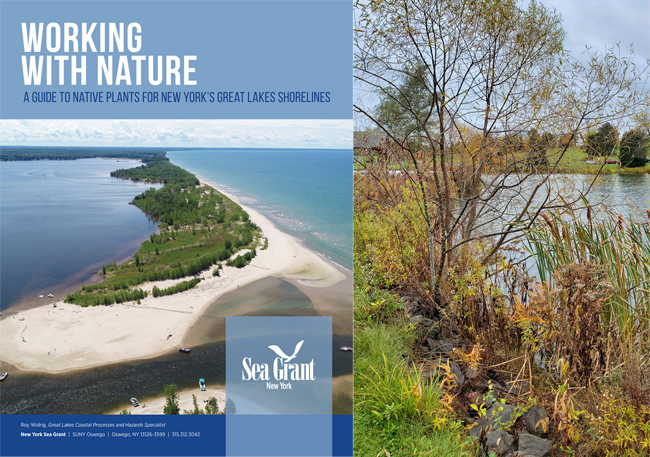
(At left) Front cover of "Working With Nature: A Guide to Native Plans for NY's Great Lakes Shorelines"; (At right) Cottonwood and willows, both water-loving species, help to stabilize this barrier beach at Fair Haven, New York (in Cayuga County). Credit: Roy Widrig, New York Sea Grant
Pick the Right Plant for the Right Place, Right Purpose
Contacts:
Roy Widrig, Great Lakes Coastal Processes and Hazards Specialist, E: rlw294@cornell.edu, P: (315) 312-3042
Kara Lynn Dunn, NYSG's Freelance Great Lakes Publicist, E: karalynn@gisco.net, P: (315) 465-7578
Oswego, NY, June 2, 2021 - New York Sea Grant has published "Working with Nature: A Guide to Native Plants for New York's Great Lakes Shorelines." (pdf) Public and private property owners can use the guide to select the right plant for the right place to revitalize the state's Great Lakes' freshwater shorelines.
The guide offers nature-based alternatives or improvements to traditional "gray" structures such as concrete seawalls, steel sheet piles, and rock rip-rap.
New York Sea Grant Coastal Hazards and Processes Specialist Roy Widrig authored the 24-page guide that includes a list of 41 species of trees, shrubs, grasses, ground covers, vines, and perennials with the preferred shoreline setting for each. Detailed photos and ideal growing conditions accompany each plant on the list.
"Reestablishing natural, stable shoreline slopes and transition zones from lake to upland areas rehabilitates habitat for native birds, fish, mammals, and insects while beautifying the waterfront, and it can aid in controlling shoreline erosion, and improve drainage and water quality," Widrig explains.
The New York State Environmental Protection Fund under the New York Ocean and Great Lakes Ecosystem Conservation Act provided funding for this native plants publication. Funding through the New York State Department of Environmental Conservation will assist with publication distribution. Print copies will be available by calling New York Sea Grant's Oswego office at 315-312-3042.
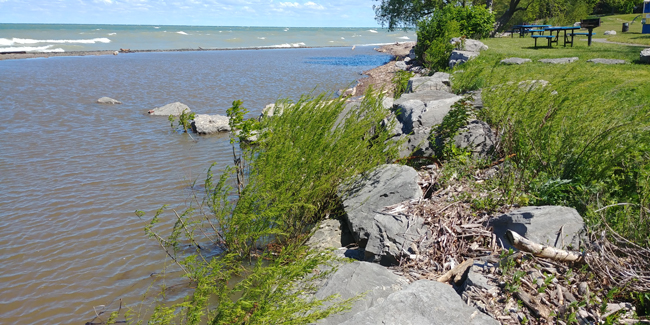
The shoreline at Lake Erie Beach in Erie County, New York. Credit: Roy Widrig, New York Sea Grant
More Info: Additional Resources for NY Waterfront Property Owners
Waterfront property owners in need of erosion management expertise can request Widrig's assistance via www.nyseagrant.org/glcoastalvirtualsitevisit. This web-based resource allows property owners to easily locate their property on a New York State map, describe erosion and flooding issues, and add photos of impacted areas for evaluation by Widrig.
Widrig is also the author of the Erosion Management for New York's Great Lakes Shoreline Guide. See www.nyseagrant.org/glcoastal for more information.
In Photos: Working With Nature
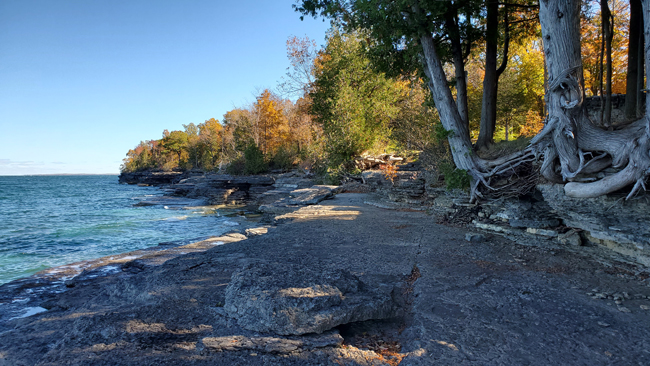
Native plants for bedrock shores, including these red cedars along Lake Ontario at Henderson, New York (in Jefferson County), must be able to survive harsh winds and winter ice, and be able to root in very shallow soils. Credit: Roy Widrig, New York Sea Grant
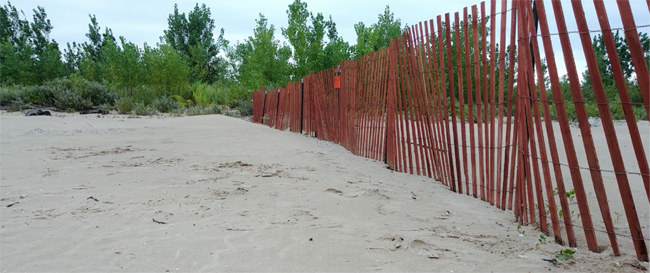
Sand fencing is contributing to the restoration of sandy beaches and the dune system along Lake Ontario in Oswego County, New York. Credit: Roy Widrig, New York Sea Grant
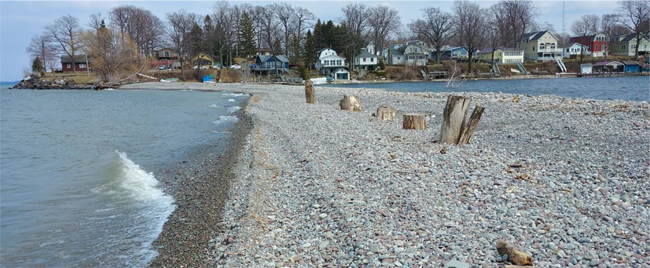
Large woody debris is buried within a barrier beach and anchored in place with wood stumps and rootwads to stabilize a cobble beach in Wayne County, New York. Credit: Roy Widrig, New York Sea Grant
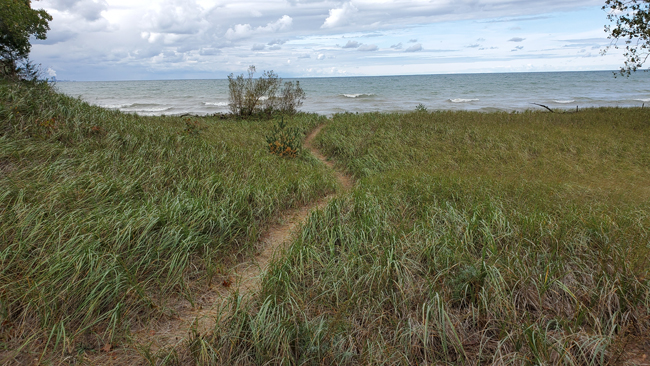
Dune grasses thrive in environments of blowing sand. Roots for Champlain beachgrass (dune grass native to Lake Ontario’s eastern shoreline) will radiate out from the main plant (rhizomes or runners) and send roots down deep within the dune. As the sand buries the grass, the plant aggressively grows towards the surface, sending new sets of runners to further stabilize the new layer of sand atop the dune. Credit: Roy Widrig, New York Sea Grant
More Info: New York Sea Grant
New York Sea Grant (NYSG), a cooperative program of Cornell University
and the State University of New York (SUNY), is one of 34 university-based
programs under the National Oceanic and Atmospheric Administration’s
National Sea Grant College Program.
Since 1971, NYSG has represented a statewide network of integrated
research, education and extension services promoting coastal community
economic vitality, environmental sustainability and citizen awareness
and understanding about the State’s marine and Great Lakes resources.
Through NYSG’s efforts, the combined talents of university scientists
and extension specialists help develop and transfer science-based
information to many coastal user groups—businesses and industries,
federal, state and local government decision-makers and agency managers,
educators, the media and the interested public.
The program maintains Great Lakes offices at Cornell University, SUNY
Buffalo, SUNY Oswego and the Wayne County Cooperative Extension office
in Newark. In the State's marine waters, NYSG has offices at Stony Brook
University in Long Island, Brooklyn College and Cornell Cooperative
Extension in NYC and Kingston in the Hudson Valley.
For updates on Sea Grant activities: www.nyseagrant.org has RSS, Facebook, Twitter, Instagram, and YouTube links. NYSG offers a free e-list sign up via www.nyseagrant.org/nycoastlines for its flagship publication, NY Coastlines/Currents, which is published quarterly.